Sustainable shopping: how to stay green when buying white goods
- Written by Trivess Moore, Research Fellow, RMIT University
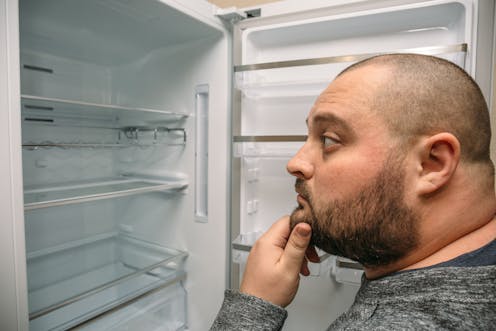
Shopping can be confusing at the best of times, and trying to find environmentally friendly options makes it even more difficult. Welcome to our Sustainable Shopping series, in which we ask experts to provide easy eco-friendly guides to purchases big and small. Send us your suggestions for future articles here.
Most of us have a range of white goods in our homes. According to the Australian Bureau of Statistics, common appliances include refrigerators (in 99.9% of homes), washing machines (97.8%) and air conditioners (74.0%). Just over half of Australian households have a dishwasher, and a similar number have a clothes dryer.
These white goods provide a host of benefits, such as reducing waste, improving comfort, helping us avoid health hazards such as rotten food, or simply freeing up our time to do other things. But they also have significant environmental impacts, and it’s important to consider these when using and choosing white goods.
Read more: How the sky can help make air conditioners at least 20% more efficient
Most white goods are used on a daily basis for years. This means the bulk of their environmental impact comes not from their manufacture, but from their everyday use. They use electricity, for example, which is often sourced from fossil fuels.
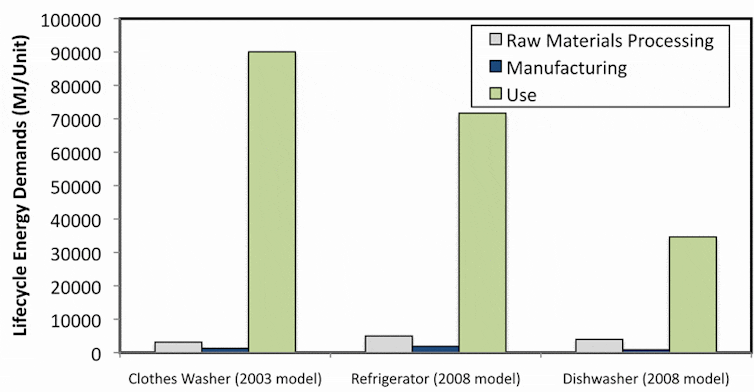
Life cycle impacts of typical white goods. MIT
When buying an appliance, many people focus on the retail price, but overlook the often significant operating costs. The table below shows the difference in annual energy costs and greenhouse emissions for different-sized dishwashers under various scenarios.
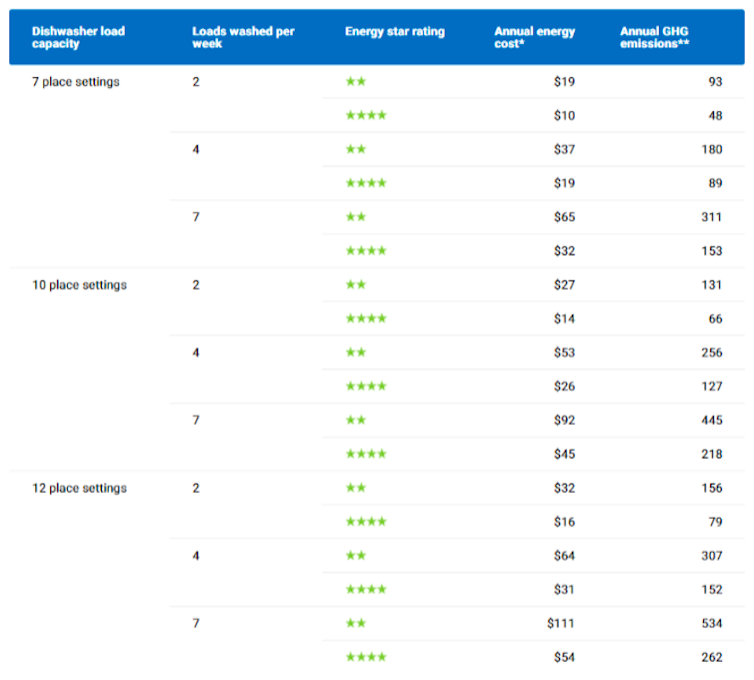
When it comes to appliances, size matters. Sustainability Victoria,
What to look for
Here are some questions you should ask when shopping for a new white goods appliance:
-
How resource-efficient is this model, compared with other options?
-
How much will it cost to operate?
-
Over the life of the product, would I be better off spending more now to buy a more energy-efficient model that costs less to run?
Read the label
White goods in Australia are required to carry a label detailing their energy and water ratings. The more stars a product has, the more energy- or water-efficient it is. The labels also provide information of average consumption across a year so that you can compare similar products, or account for factors such as the size of the appliance.
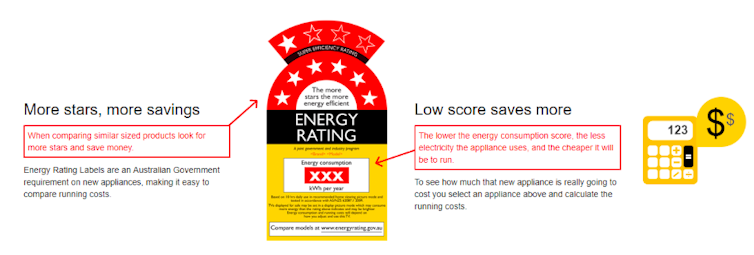 Knowing how to interpret consumer information can be valuable. Energyrating.gov.au, Author provided
Knowing how to interpret consumer information can be valuable. Energyrating.gov.au, Author provided
The Energy Rating website also allows you to make comparisons, and even calculates usage costs and savings for you. As shown in the figure below, choosing a 10-star fridge over a 3-star one will save you an estimated A$664 in running costs over 10 years. This would offset some or all of the extra up-front cost of buying a more sustainable model.
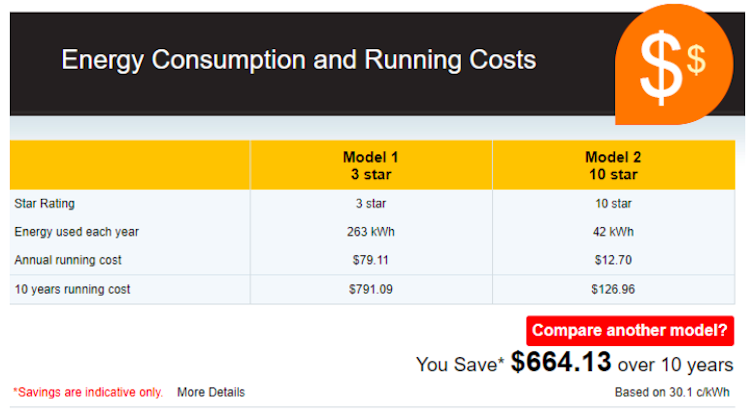 The Australian government’s energy rating website helps you calculate the savings from being energy-efficient. Energyrating.gov.au, Author provided
The Australian government’s energy rating website helps you calculate the savings from being energy-efficient. Energyrating.gov.au, Author provided
Many other organisations and websites also provide performance and user reviews for appliances. Choice is an independent organisation that tests a variety of products, including white goods. The tests scrutinise a range of criteria, including energy- and water-efficiency, ease of use, operating costs, and durability.
Use wisely
Once you get your new appliance home, it is also crucial to use it properly. Make sure you read the manual and find out how to maximise the efficiency of the appliance.
For example, talk to your air conditioner installer to determine the optimal position to cool and heat your space, depending on the aspect and layout of your home. And make sure you leave enough space around the back and side of your fridge for air to circulate, which helps dissipate waste heat more effectively and can save up to 150kg of carbon dioxide emissions a year.
Read more: How colour-coding your fridge can stop your greens going to waste
Make sure you turn the appliance off when not in use – failing to do this can further add to running costs and environmental impact. Ask yourself whether you really need to keep that ancient beer fridge humming away in the garage.
Of course, you don’t have to wait for a new appliance before doing all of these things. You can make your current appliances perform more efficiently by reviewing how you use and position them.
Washing a full load of clothes is more efficient and sustainable than only washing a part load. If you think you need to do smaller washloads generally, then consider buying a smaller washing machine, or find a model that has smart features such as being able to do a half load.
Many appliances such as dishwashers and washing machines also feature “eco” modes that can save significant amounts of water and energy.
Finally, it’s always worth asking yourself whether you truly need to buy that new appliance. Consider having a broken appliance fixed, as this will avoid using all the resources required to manufacture a new one. Or consider buying secondhand.
Even if buying secondhand, you can check the environmental performance of the appliance, either through the energy rating website or via the manufacturer. Make sure you compare this to new options to see which works out better over the life of the product.
And if you do buy yourself a new or secondhand appliance, make sure you look into how to recycle your old appliance, through your local council, charities or other organisations.
Authors: Trivess Moore, Research Fellow, RMIT University
Read more http://theconversation.com/sustainable-shopping-how-to-stay-green-when-buying-white-goods-89454





